Flat Kyusu
Flat Kyusu
🚚 Free shipping above $49
🇯🇵 Directly sourced from Japan
🔐 Secure payment
😍 Great customer service
No se pudo cargar la disponibilidad de retiro
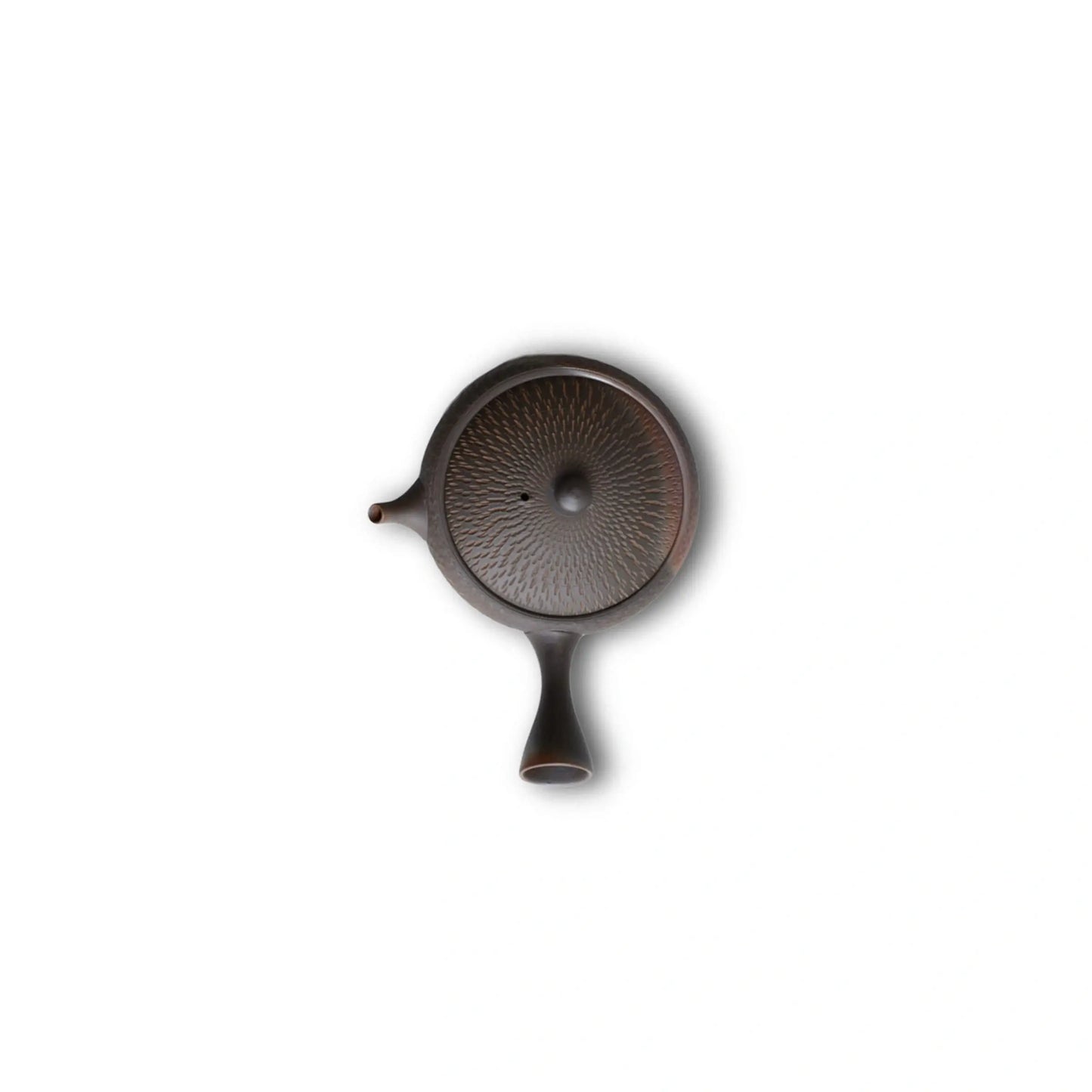
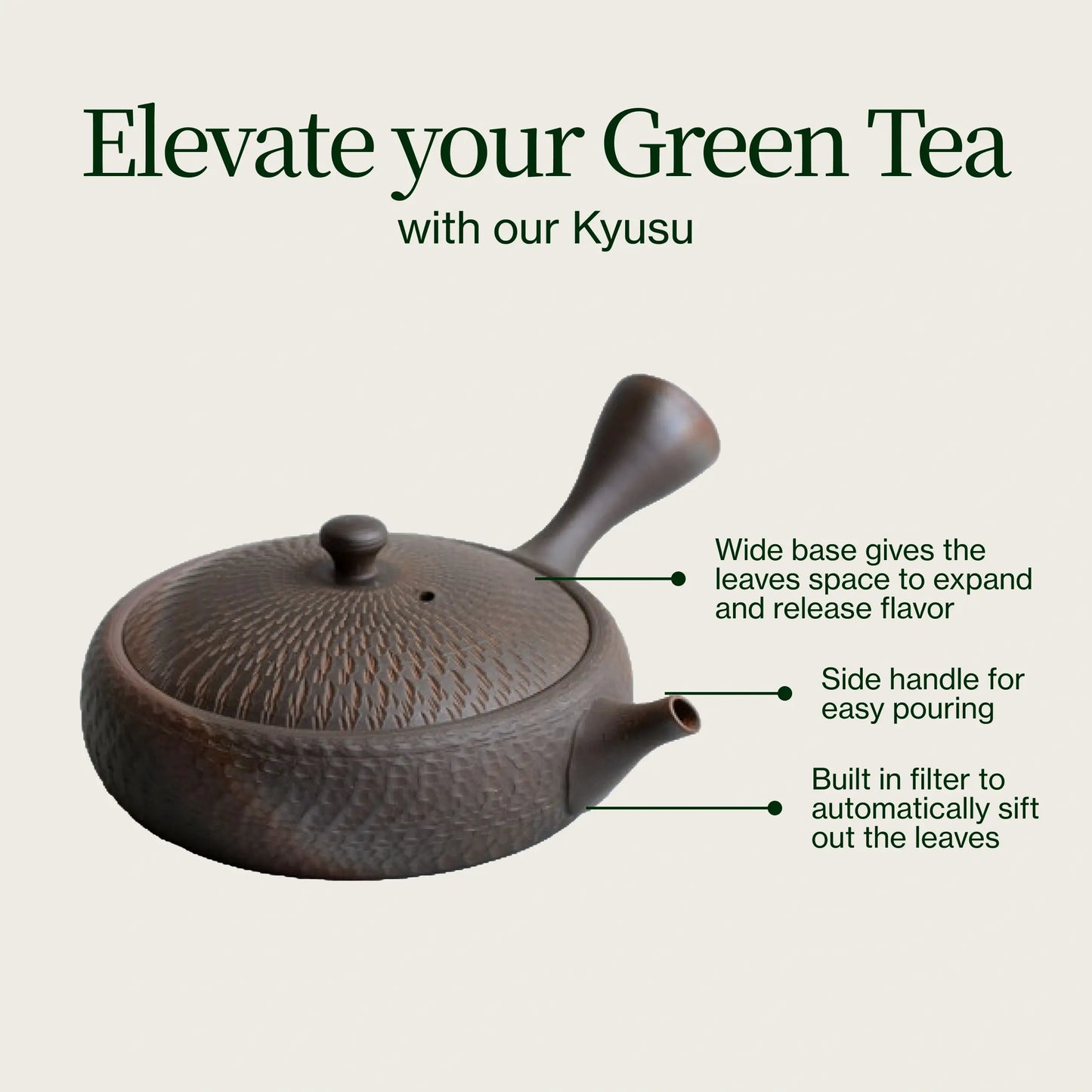
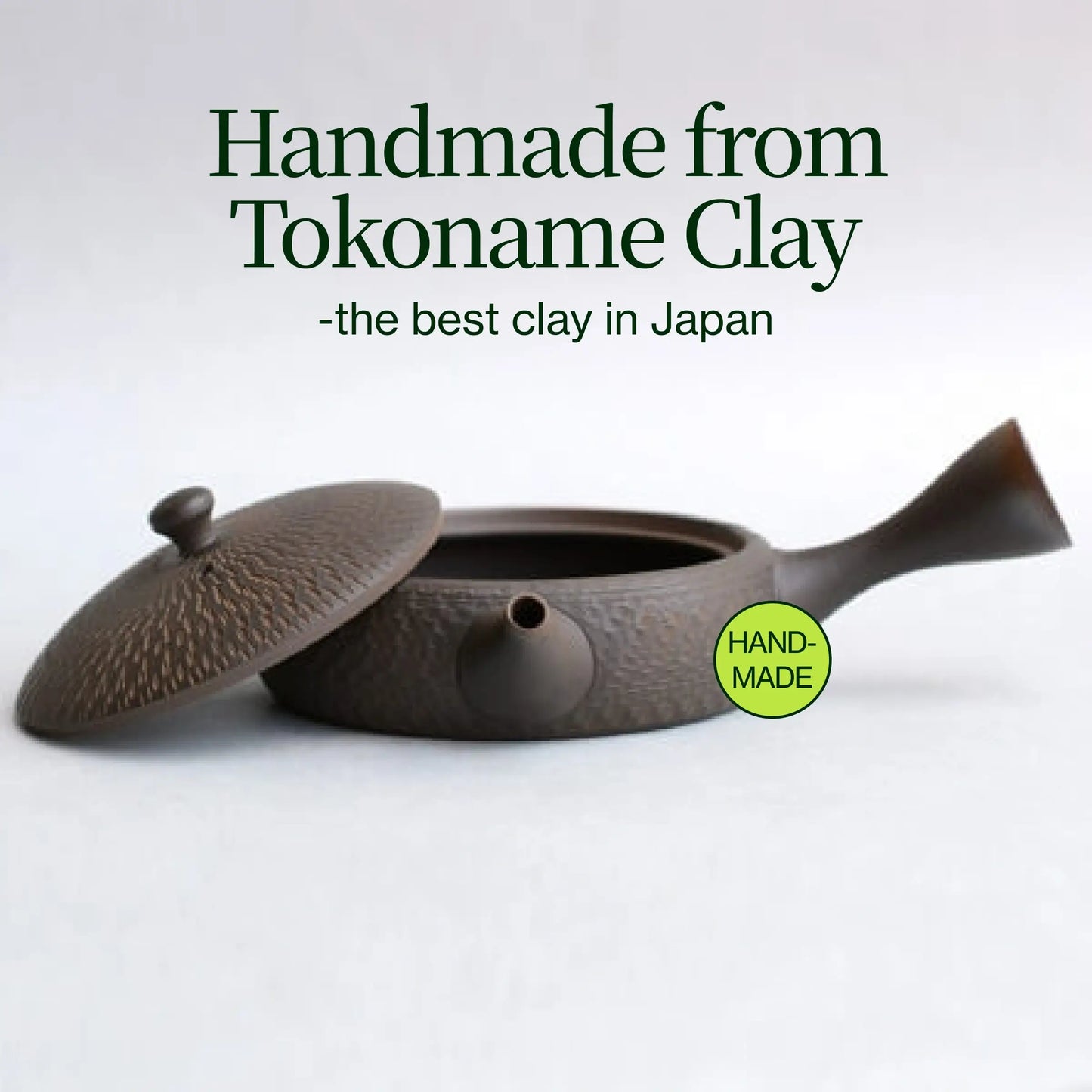
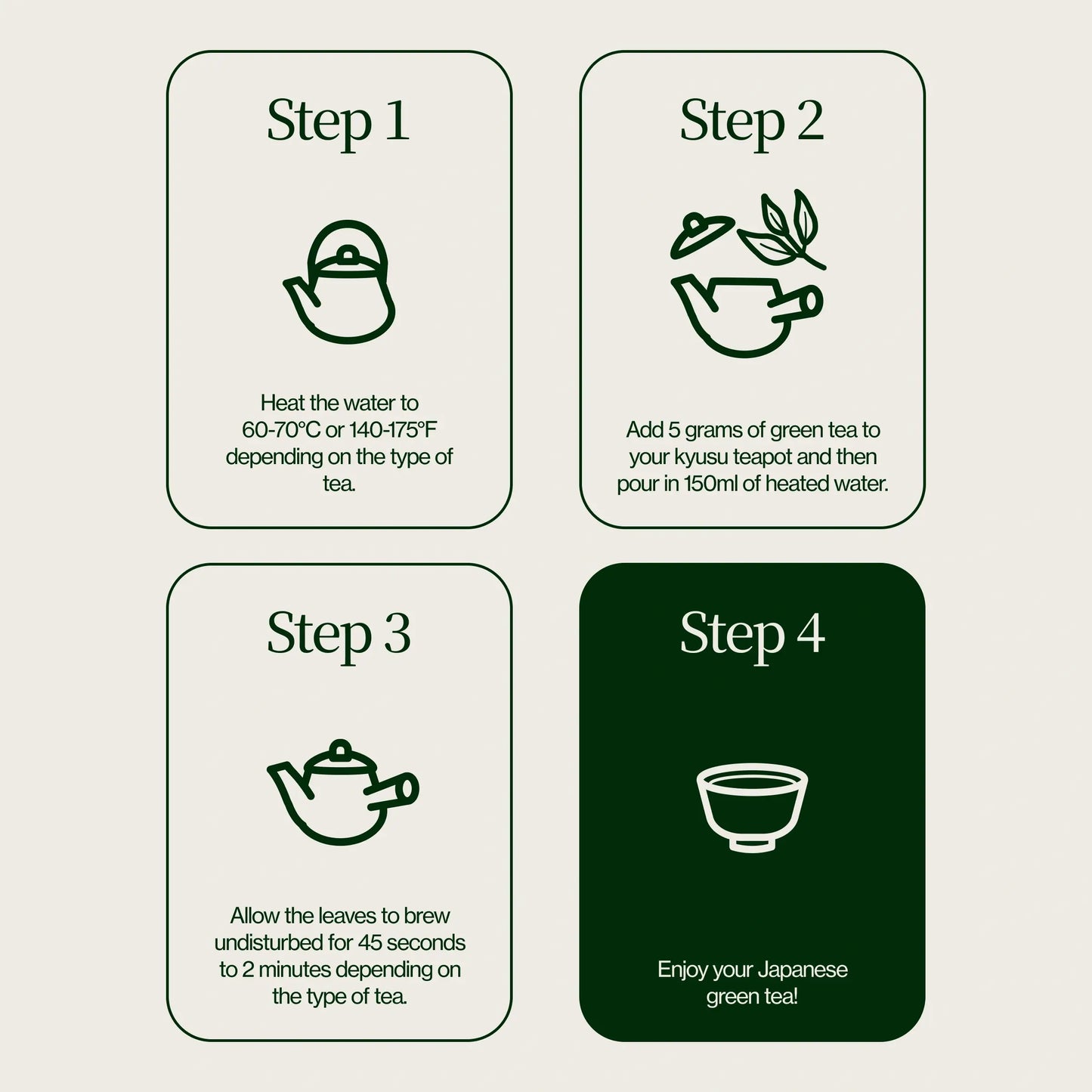
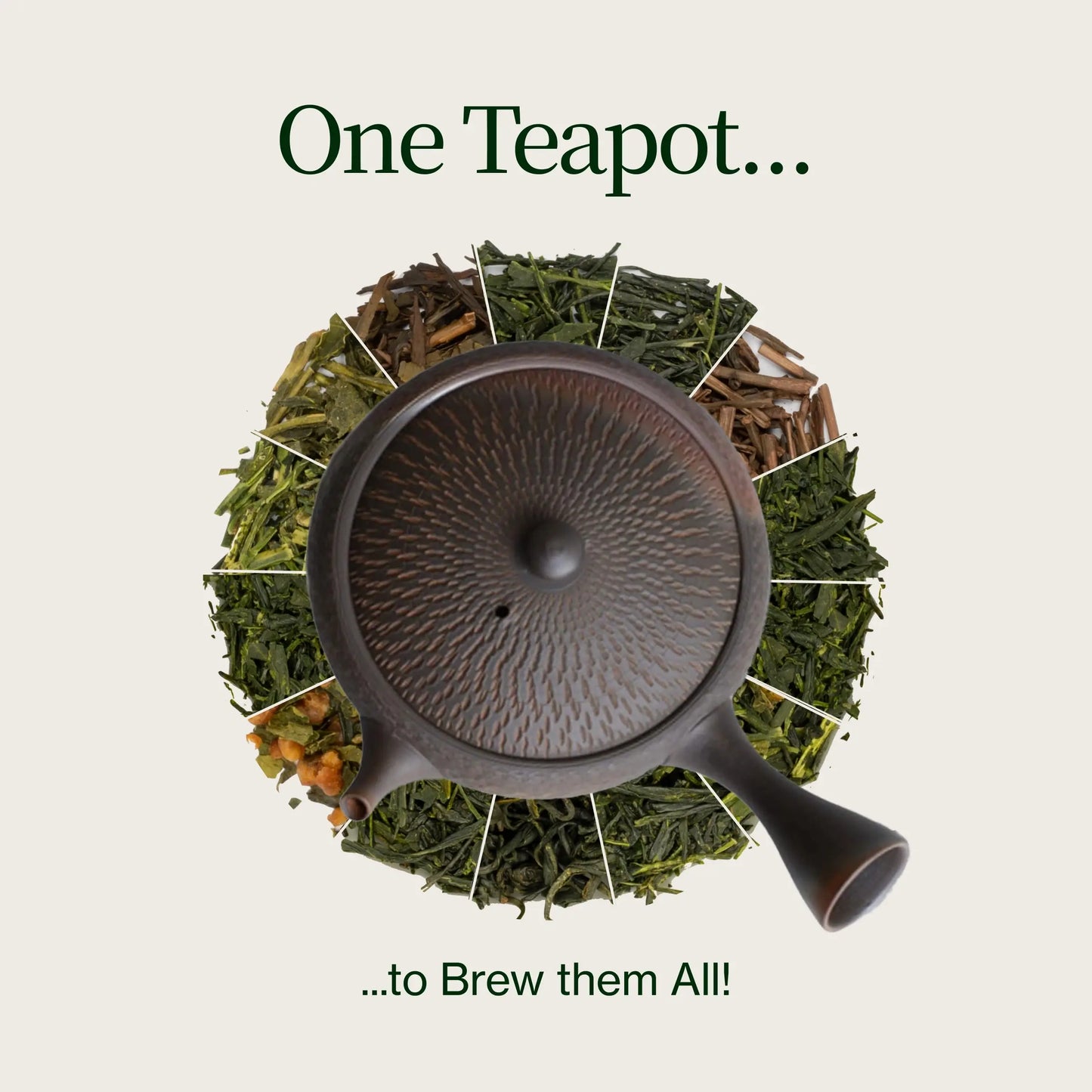
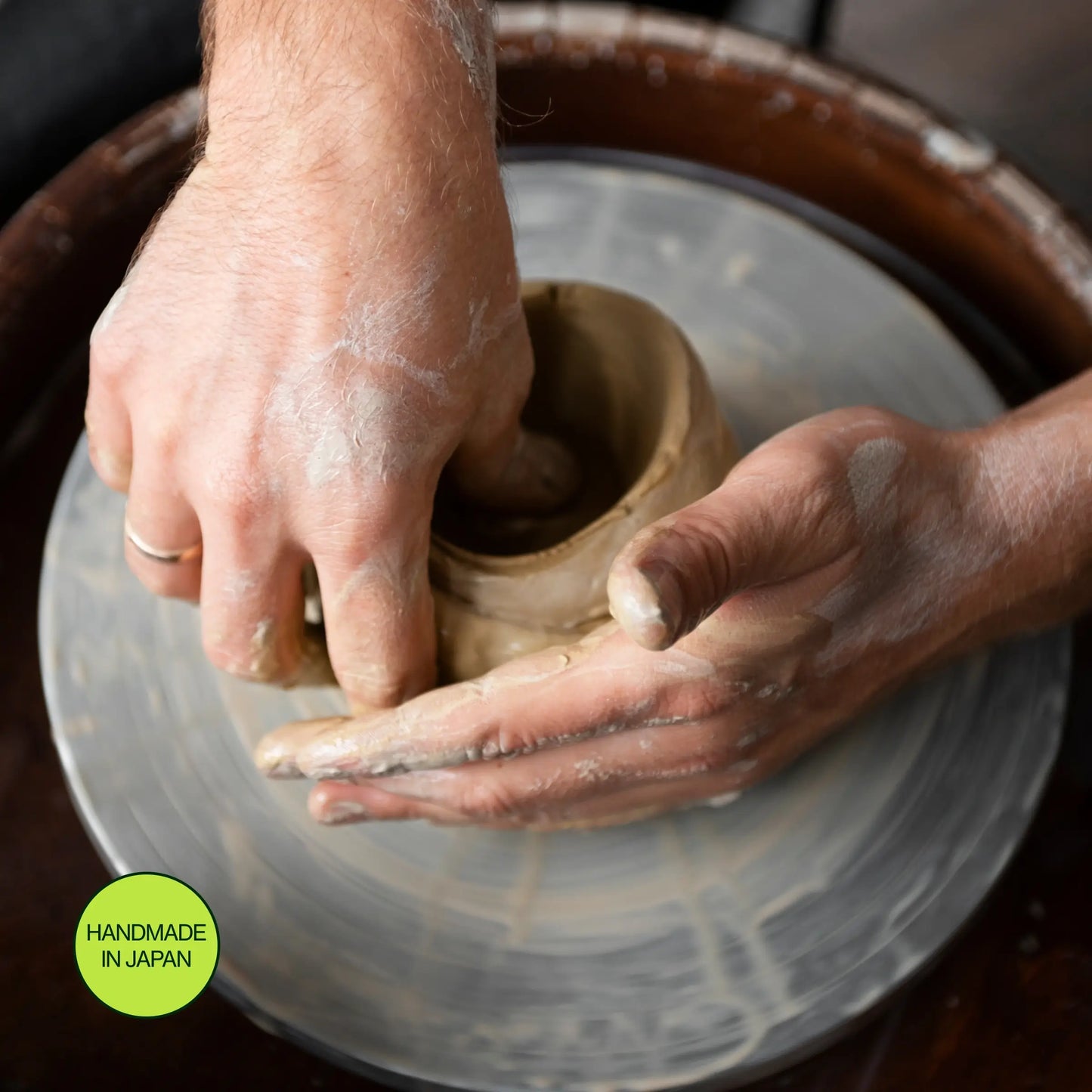
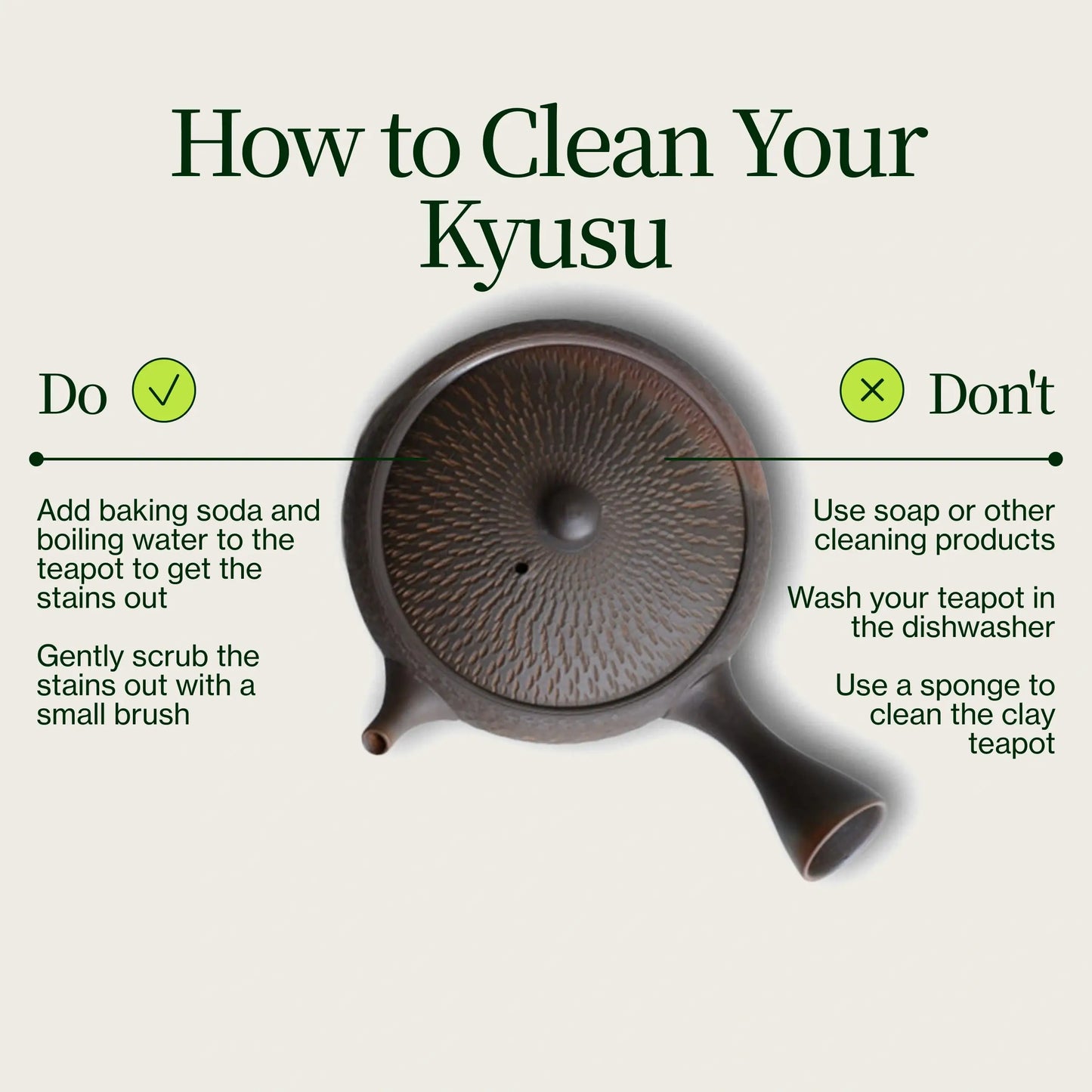
The body of most japanese kyusu teapots have a more spherical shape, but this flat kyusu deviates from the traditional design with a much wider, shallower base. There are a few benefits to this design, which we will cover in a later section. This handmade flat kyusu has been designed to enhance your brewing routine. The artisan designed it with a built-in clay filter and a side handle, that both serve important functions when it comes to preparing tea.
Because they are handmade by a Japanese teapot artisan, there could be small variation in terms of final color of the teaware.
Flat Kyusu Teapot Features
Hollow side handle
This feature on the flat kyusu is something you will recognize from other kyusu teapots. The hollow side handle dissipates heat, so it stays cool to the touch even as you pour out hot tea. The handle makes pouring easier and more elegant, as all it takes is a simple turn of the wrist to pour out a consistent stream of delicious tea.
Built in Filter
The built in clay filter automatically sifts out the tea leaves as you pour so they don’t end up in your cup. It is important to separate the tea leaves out as soon as the brewing time is up so they don’t become bitter. The filter is entirely made from clay, so you can prepare tea without it being in contact with metal, which may affect the taste.
Other design features
The flat kyusu also has a few other features that are mostly aesthetic. First, the engraving on the lid and base of the teapot is a beautiful, yet minimalist touch that sets this teapot apart from others. The engraving also reminds you that beneath the smooth finish of the teapot lies a layer of natural clay.
The clay teapot also picks up a natural color gradient, shifting from gray to red and back again. This is due to small variations in the oxidized firing process, depending on where and how the teapot was fired. This is known as the Gyokko Yohen style, and it creates this beautiful “scorched” effect on the teapots. This gives an element of uniqueness to each piece, and really reminds you of the work that goes into making the teapot as you prepare the tea.
Who makes the flat kyusu
The flat kyusu teapot is handmade at the Gyokko pottery studio in Tokoname. This area is particularly famous for its clay pottery, especially clay teapots like this. Hirotaka Umehara is a second generation ceramic artisan, and he works diligently at the pottery wheel to craft beautiful handmade clay pots like these. You can feel the craftsmanship in the teapot, as each piece is slightly different.
Where is the clay from?
The clay used to make this teapot is from Tokoname, Japan. This is very important, as Tokoname is considered to have the highest quality clay in all of Japan. The teapot is also produced in the same town of Tokoname, which has an illustrious history of teaware production.
Tokoname clay is known for having slower heat reduction and a lower porosity. The porosity is so low that the clay is actually known to hold water even before it is fired. This makes the teapots take longer to become “seasoned” with a particular type of tea. They are more versatile and used for a few different tea types.
The clay is iron rich, which gives it the trademark red color. When the teapot is fired a third time with an oxygen rich flame, it can take on a black color. This is why it is common to see both red and black teapots in Japan.
Benefits
When you look at the flat kyusu, the first thing you notice is that the shape is sleek and smooth, but rather unusual. While most kyusu teapots have a width and height that are about equal, this teapot is much flatter. The benefit of this becomes apparent when you brew the tea.
The benefit of having a flat kyusu is that you can spread out a wider blanket of tea leaves at the bottom and brew using less water. Because the tea leaves do not overlap, the heat and water is applied evenly to each of the leaves. This creates a rich yet consistent flavor that works particularly well for teas like sencha and gyokuro.
What teas are best for the flat kyusu?
The flat kyusu teapot works particularly well for teas like gyokuro and kabuse sencha. These teas tend to be tightly rolled and when they infuse into water, they tend to expand vertically instead of horizontally. This flat kyusu trains the tea leaves so that they expand horizontally and do not pile on top of eachother.
Creating a richer tea experience
This lower capacity flat kyusu is also great for preparing super concentrated cups of gyokuro tea. At high end tea shops in Japan, you will see tea masters prepare gyokuro with 5 grams of leaves and only 50ml of water. They start by carefully laying out a thin layer of tea leaves at the base of a flat kyusu or shiboridashi and then carefully drizzle a small amount of water on top, so that the leaves are not agitated.
This method is perfect for special occasions, sharing a small amount of tea in a tiny glass. This smaller, more concentrated quantity of gyokuro tea forces you to savor every drop. When the tea is dense like this, you not only savor the flavor, but also the texture as well as it weighs heavy on your palate and slowly glides over the top of your tongue. This fine texture of gyokuro tea has been described as oil or gel-like, and it is certainly something that should be experienced at least once.
How to clean the flat kyusu
When it comes to taking care of your flat kyusu teapot, there are a few things you will want to keep in mind. This teapot should not be taken through a rigorous cleaning everytime you use it, but it should rather be rinsed and stored properly to maintain its integrity over time.
First, use hot water to clean out your flat kyusu before each use. You should not use soap or any other cleaning product. You should also not use sponges or paper towels, as these fibers may become trapped inside the clay and affect the flavor of the next tea you prepare.
After brewing the tea, you should inspect the teapot to make sure all the leaves are out, and give it a gently rinse a few times. You can add water in, swirl it around and pour it out repeatedly to make sure all the tea leaves are gone. The you can run water through the spout with a faucet to make sure no leaves are trapped inside.
Drying the flat kyusu teapot
It is important that the kyusu is completely dry before you store it. The best way to do this is to let it air dry. After you have rinsed the teapot thoroughly, you can lay out a dish towel and place the teapot upside down onto it, just as you would with any other dish you hand washed. Keep the lid off to avoid trapping in humidity and once it is completely dry you can put it away.







